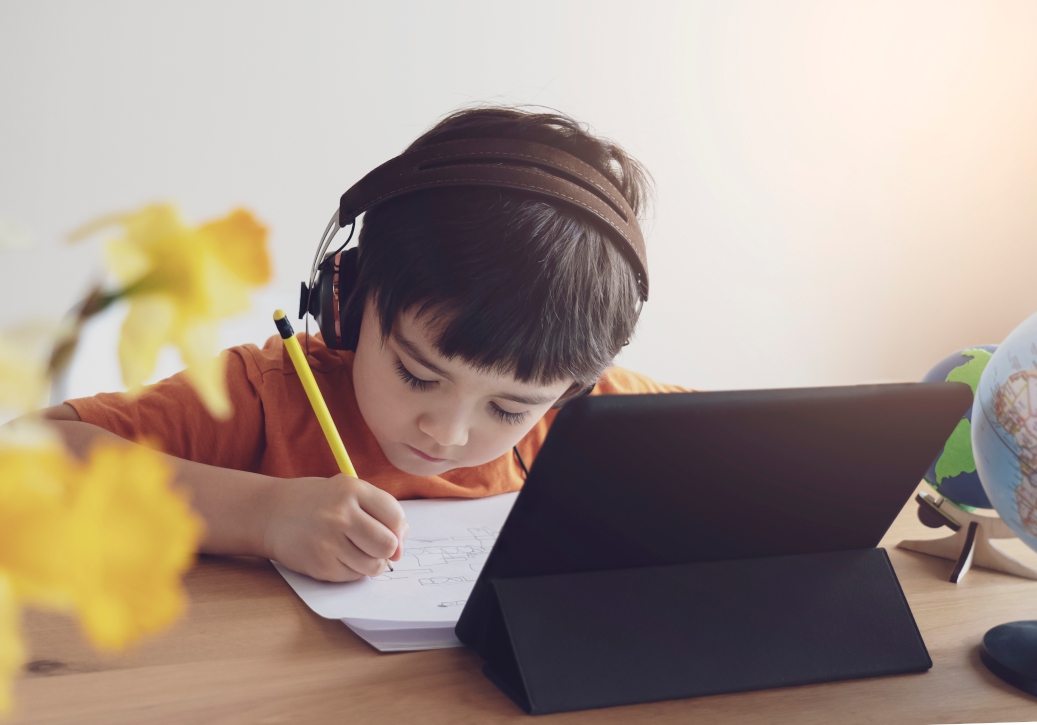No more screen time! We’ve all heard this; honestly, many of us have even said this. But, like everything, virtual platforms are not all the same. In fact, the use of screen time in therapeutic settings had already been gaining traction long before Covid had us all locked in our homes clutching our toilet paper with our children. We were even moving toward accepting an online platform as a suitable alternative to the sensory nightmare of the overpacked, modern day brick and mortar school. But to be clear, digital learning intervention is not the ill-fated attempts made by teachers untrained to take on thirty- plus students online for six hours a day overnight. There’s quite a bit more to it than that, especially for our neurodiverse learners.
At one time, we assumed students came to the classroom with certain commonalities and anything outside this perceived norm was considered a neurodiverse outlier. Though we commonly regard this neurodiversity as being the autism spectrum, it can indicate a myriad of differences. We were all simply looking for the sometimes elusive norm that isn’t all it is cracked up to be- all you left-handers raise your hand. It wasn’t until a shift in focus, the recognizing (dare we say embracing?) of differences as being human, rather than a set of negative characteristics to avoid or modify that we finally started moving in the right direction.
So, what is neurodiversity or neuro-atypical, other than seemingly scary terms being tossed around in parent meetings across the nation, often without the benefit of what this will mean for the learner and their families? Can I get an Amen?! In actuality, neurodiverse simply reflects the wide range of brain function typically found in our population with respect to how we learn, how we regulate mood, how we stay focused when the topic holds no interest and how we interact with others. Sometimes we excel, sometimes we do not. Bottom line: we are all different and, more importantly, that’s okay.

Filtering sensory information can be impaired in more than one way, making traditional environments challenging because this impairment may heighten the awareness of another. For instance, smells coming through the vents from other rooms, backpacks, room deodorizers and cleaners can quickly take hold of the senses like perfume wafting in an elevator. Difficulty moving the body in open spaces coupled with hyper pain receptors can make navigating crowded classrooms difficult, even painful. Poor time management can breed the feeling of constantly being rushed or being penalized for rushing to accomplish a task within poorly perceived limitations. Though not an exhaustive list, it is easy to see why behavior issues creep up in our sensory children without the proper tools to navigate these environments successfully.

Through expanding our understanding of strengths and not just perceived weaknesses of this population, engineers have developed tools with integrated assistive technologies (i.e. lowered visibility, leveled timers, sound muting, time limits, performance boards) that can structure the learning environment with far more precision than the classroom. And, by measuring the connection between the sensory and the cognitive, we can begin to equip educators with the ability to consider how their students process sensory information on a conscious level enough to be able to learn, think, and reason. Now remove a child once set to unrealistic norms, sensory systems clogged by a classroom filled with bright overhead lights, noisy, chattering children, vibrantly colored artwork shifted by the strong overhead fans and focus learning the way their brain works, building confidence and stamina with instruction designed specifically for them. It isn’t hard to consider how they, or any child, could be consciously aware for six hours a day without becoming overwhelmed or how having their needs now met could mean all the difference.
Covid-19 forced learners to access instruction online, providing researchers the unprecedented opportunities to assess educational best practices in an organic, world-wide sampling. What we’ve learned through this process will result in better sensory-cognitive interactions with specialists and virtual interfaces. And, by addressing sensory differences in support of neurodiverse populations, we can leverage individualized instruction and advancement in education technology to meet children where they are at developmentally.












